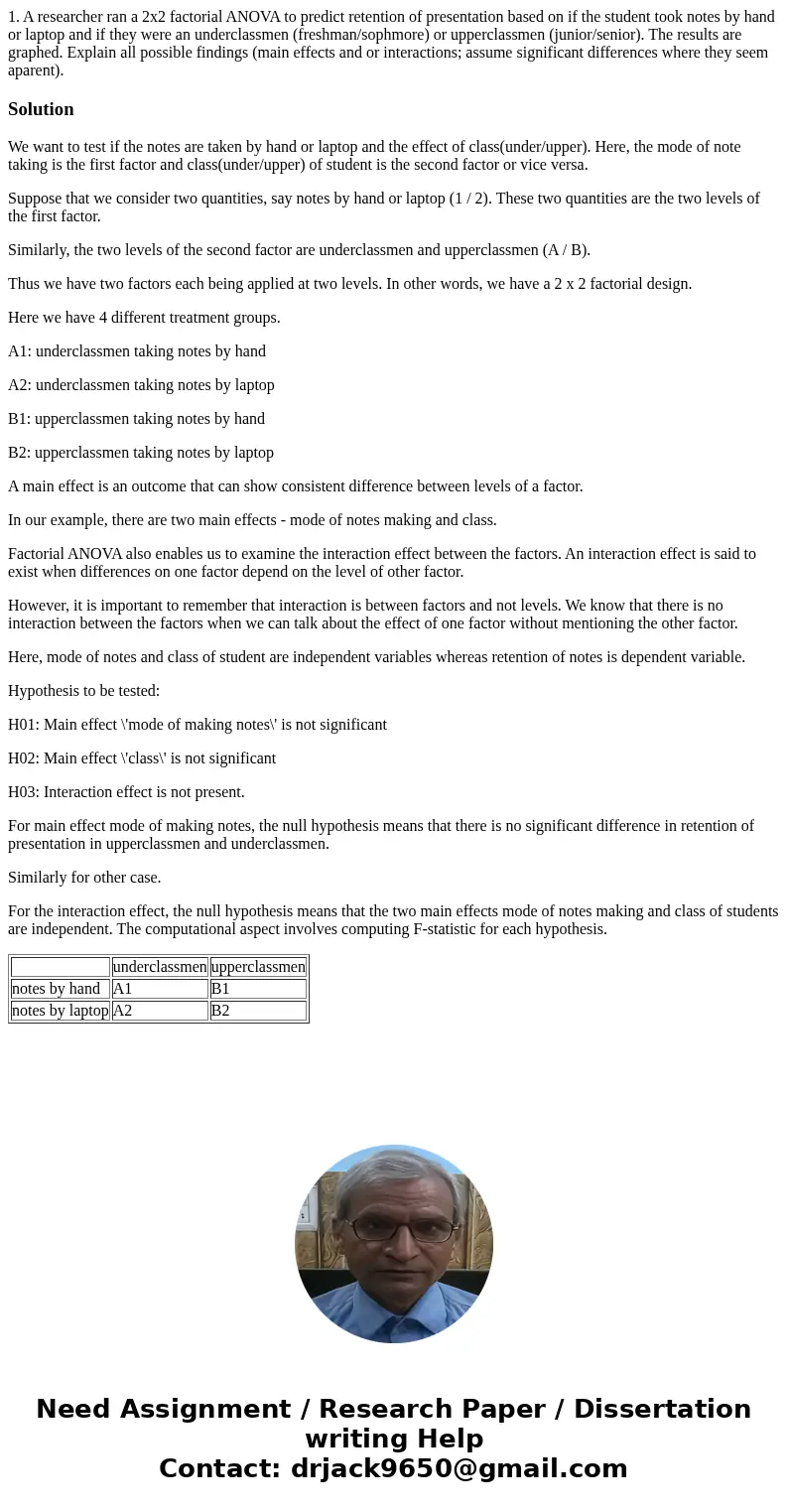1 A researcher ran a 2x2 factorial ANOVA to predict retentio
1. A researcher ran a 2x2 factorial ANOVA to predict retention of presentation based on if the student took notes by hand or laptop and if they were an underclassmen (freshman/sophmore) or upperclassmen (junior/senior). The results are graphed. Explain all possible findings (main effects and or interactions; assume significant differences where they seem aparent).
Solution
We want to test if the notes are taken by hand or laptop and the effect of class(under/upper). Here, the mode of note taking is the first factor and class(under/upper) of student is the second factor or vice versa.
Suppose that we consider two quantities, say notes by hand or laptop (1 / 2). These two quantities are the two levels of the first factor.
Similarly, the two levels of the second factor are underclassmen and upperclassmen (A / B).
Thus we have two factors each being applied at two levels. In other words, we have a 2 x 2 factorial design.
Here we have 4 different treatment groups.
A1: underclassmen taking notes by hand
A2: underclassmen taking notes by laptop
B1: upperclassmen taking notes by hand
B2: upperclassmen taking notes by laptop
A main effect is an outcome that can show consistent difference between levels of a factor.
In our example, there are two main effects - mode of notes making and class.
Factorial ANOVA also enables us to examine the interaction effect between the factors. An interaction effect is said to exist when differences on one factor depend on the level of other factor.
However, it is important to remember that interaction is between factors and not levels. We know that there is no interaction between the factors when we can talk about the effect of one factor without mentioning the other factor.
Here, mode of notes and class of student are independent variables whereas retention of notes is dependent variable.
Hypothesis to be tested:
H01: Main effect \'mode of making notes\' is not significant
H02: Main effect \'class\' is not significant
H03: Interaction effect is not present.
For main effect mode of making notes, the null hypothesis means that there is no significant difference in retention of presentation in upperclassmen and underclassmen.
Similarly for other case.
For the interaction effect, the null hypothesis means that the two main effects mode of notes making and class of students are independent. The computational aspect involves computing F-statistic for each hypothesis.
| underclassmen | upperclassmen | |
| notes by hand | A1 | B1 |
| notes by laptop | A2 | B2 |

 Homework Sourse
Homework Sourse